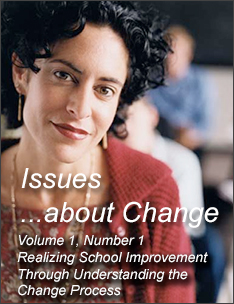Collective Creativity
In 1990, Peter Senge's book The Fifth Discipline arrived in bookstores and began popping up in the boardrooms of corporate America. Over the next year or so, the book and its description of learning organizations, which might serve to increase organizational capacity and creativity, moved into the educational environment. The idea of a learning organization "where people continually expand their capacity to create the results they truly desire, where new and expansive patterns of thinking are nurtured, where collective aspiration is set free, and where people are continually learning how to learn together" (p. 3) caught the attention of educators who were struggling to plan and implement reform in the nation's schools. As Senge's paradigm shift was explored by educators and shared in educational journals, the label became learning communities.
In schools, the learning community is demonstrated by people from multiple constituencies, at all levels, collaboratively and continually working together (Louis & Kruse, 1995). Such collaborative work is grounded in what Newmann (reported by Brandt, 1995) and Louis and Kruse label reflective dialogue, in which staff conduct conversations about students and teaching and learning, identifying related issues and problems. Griffin (cited by Sergiovanni, 1994a, p. 154) refers to these activities as inquiry, and
Participants in such conversations learn to apply new ideas and information to problem solving and therefore are able to create new conditions for students. Key tools in this process are shared values and vision; supportive physical, temporal, and social conditions; and a shared personal practice. We will look at each of these in turn.
Next Page: Shared Values and Vision

